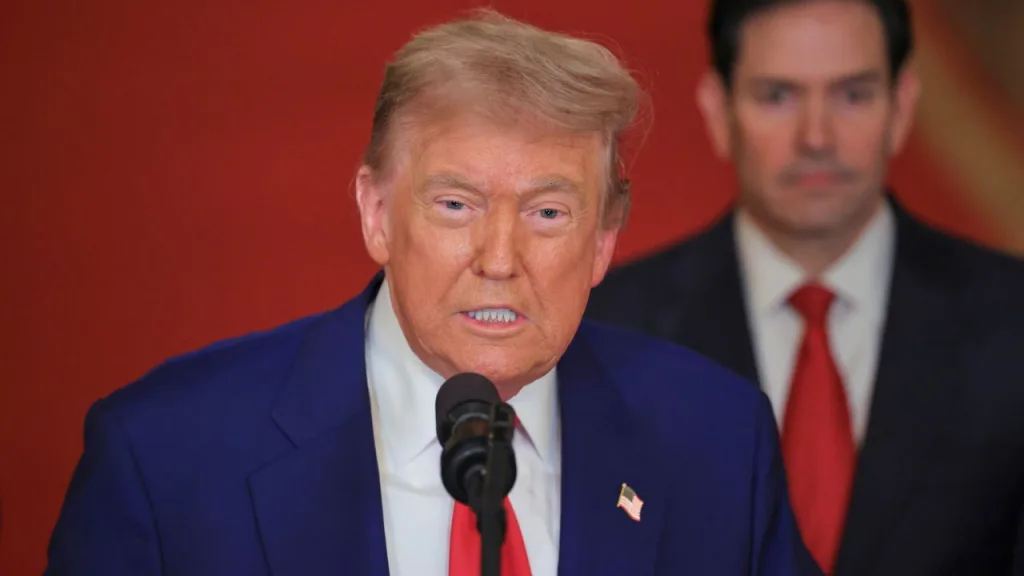The Middle East finds itself at a critical crossroads as the Israel-Iran conflict reaches unprecedented levels of intensity. In a dramatic escalation that has sent shockwaves across the international community, the United States has conducted direct military strikes against key Iranian nuclear facilities, marking a pivotal moment in the ongoing regional crisis.
These strikes, which targeted some of Iran’s most sensitive nuclear installations, represent the most significant direct American military action against Iranian infrastructure in decades. As tensions continue to spiral between Israel and Iran, the involvement of US forces has transformed what was already a complex regional conflict into a potentially global crisis with far-reaching implications for Middle Eastern stability, international diplomacy, and global security. The world watches with bated breath as world leaders navigate this dangerous moment, where a single miscalculation could trigger consequences that extend far beyond the borders of the immediate combatants.
Table of Contents
US Military Strikes Target Iran’s Nuclear Infrastructure
The United States launched a series of coordinated strikes against Iranian nuclear facilities early Sunday morning, targeting three of the country’s most critical nuclear installations. The precision strikes hit the Fordow enrichment facility, the Natanz nuclear complex, and the Isfahan uranium conversion facility, all of which play crucial roles in Iran’s nuclear program. These facilities have long been at the center of international concerns about Iran’s nuclear ambitions and have been subject to various sanctions and diplomatic efforts over the years.
President Donald Trump, addressing the nation from the White House, declared that the targeted sites were “totally obliterated” and issued a stern warning that additional targets could be struck if Iran fails to pursue peace. The President’s bold statement underscored the seriousness of the current situation and America’s commitment to preventing further escalation while maintaining military pressure on Iranian leadership. This marked the first time in recent history that the United States has directly targeted Iranian nuclear infrastructure, representing a significant shift in American foreign policy approach toward the Islamic Republic.

Advanced Military Technology Deployed in Historic Operation
The operation showcased some of America’s most advanced military capabilities, with B-2 Spirit stealth bombers spearheading the assault. These sophisticated aircraft, known for their ability to penetrate heavily defended airspace undetected, delivered devastating firepower to their targets with surgical precision. Perhaps most notably, military sources confirmed the operational use of the massive 30,000-pound “bunker buster” bomb, officially known as the Massive Ordnance Penetrator (MOP), marking its first known deployment in combat operations.
This colossal weapon, specifically designed to penetrate deeply buried and heavily fortified targets, was developed with facilities like Iran’s underground nuclear installations in mind. The deployment of such advanced weaponry signals the United States’ determination to neutralize Iran’s nuclear capabilities and demonstrates the significant military resources being committed to this operation. The successful use of these sophisticated systems also sends a clear message to other potential adversaries about America’s technological superiority and willingness to employ it when necessary.
Iran’s Defiant Response and International Ramifications
Despite the extensive damage inflicted on their nuclear facilities, Iranian officials have adopted a defiant stance, attempting to minimize the impact of the American strikes. Iranian lawmakers have characterized the attacks as “superficial,” with some officials claiming that critical facilities like Fordow sustained minimal damage. However, intelligence assessments suggest that the strikes were far more effective than Iranian officials are publicly acknowledging, with significant disruption to the country’s nuclear program likely to persist for months or even years.
Iranian leadership has responded with characteristic rhetoric, warning that the American strikes will have “everlasting consequences” and calling for an emergency session of the United Nations Security Council. The absence of an immediate official response from Supreme Leader Ayatollah Ali Khamenei has created uncertainty about Iran’s next moves, though military commanders have hinted at potential retaliation against American interests in the region. This diplomatic maneuvering reflects Iran’s attempt to rally international support while buying time to assess the true extent of the damage and plan their response strategy.

Escalating Military Exchange Between Israel and Iran
The American strikes occurred against the backdrop of an already intensifying conflict between Israel and Iran that has now entered its second week. This regional confrontation has seen both nations engage in unprecedented direct military exchanges, abandoning the proxy warfare that has characterized their relationship for decades. The conflict represents a fundamental shift in Middle Eastern geopolitics, with traditional regional powers now engaging in open hostilities rather than fighting through intermediaries.
Following the US strikes on Iranian nuclear facilities, Israel’s military reported that Iran had launched a fresh wave of missiles toward Israeli territory, demonstrating Tehran’s determination to continue the fight despite the significant blow to its nuclear program. This pattern of attack and retaliation has created a dangerous cycle of escalation that threatens to draw in additional regional and global powers. The international community has expressed grave concern about the potential for this conflict to spread beyond the immediate combatants, particularly given the strategic importance of the Middle East to global energy supplies and trade routes.
Regional and Global Security Implications
The current crisis has profound implications that extend far beyond the immediate participants, threatening to reshape the entire Middle Eastern security landscape. Regional allies and adversaries are being forced to choose sides or risk being drawn into the conflict involuntarily. Countries like Saudi Arabia, the United Arab Emirates, and Turkey find themselves navigating complex diplomatic and security challenges as they attempt to protect their interests while avoiding direct involvement in the hostilities.

The involvement of the United States in direct military action against Iran has also raised concerns about potential retaliation against American forces and interests throughout the region. Military bases in Iraq, Syria, and the Gulf states housing American personnel have been placed on high alert, while diplomatic facilities have enhanced their security measures in anticipation of possible Iranian-sponsored attacks. This heightened state of readiness reflects the serious nature of the current threat environment and the potential for the conflict to expand rapidly beyond its current scope.
Timeline of Recent Developments
| Date | Event | Impact |
|---|---|---|
| June 15, 2025 | Initial Israel-Iran hostilities begin | Regional tensions spike |
| June 18, 2025 | Escalation of missile exchanges | International concern grows |
| June 21, 2025 | US announces support for Israel | Global markets react |
| June 22, 2025 | US strikes Iranian nuclear facilities | Major escalation occurs |
| June 22, 2025 | Iran launches retaliatory missiles | Cycle of violence continues |
Conclusion
The Israel-Iran conflict has reached a dangerous new phase with direct US military involvement, fundamentally altering the dynamics of Middle Eastern geopolitics. As the international community grapples with the implications of these unprecedented strikes, the focus now turns to preventing further escalation while addressing the underlying tensions that have brought the region to this critical juncture. The coming days and weeks will be crucial in determining whether diplomatic solutions can be found or if the world will witness an even more devastating expansion of this already dangerous conflict.
Frequently Asked Questions
What prompted the US to directly strike Iranian nuclear facilities?
The US strikes were prompted by the escalating Israel-Iran conflict and intelligence indicating that Iran was preparing to use its nuclear facilities to support aggressive actions against Israel. The decision to target these facilities represents a strategic effort to degrade Iran’s nuclear capabilities while supporting America’s key Middle Eastern ally. The timing suggests that US leadership viewed the situation as having reached a critical threshold where direct action was necessary to prevent further escalation.
How significant is the damage to Iran’s nuclear program?
While Iranian officials claim the strikes were superficial, intelligence assessments suggest significant damage to key nuclear infrastructure. The use of bunker-buster bombs specifically designed to penetrate hardened facilities indicates that critical underground components were likely destroyed or severely damaged. The full extent of the damage may not be known for weeks or months, but experts believe Iran’s nuclear program has been set back considerably, potentially by years in some areas.








